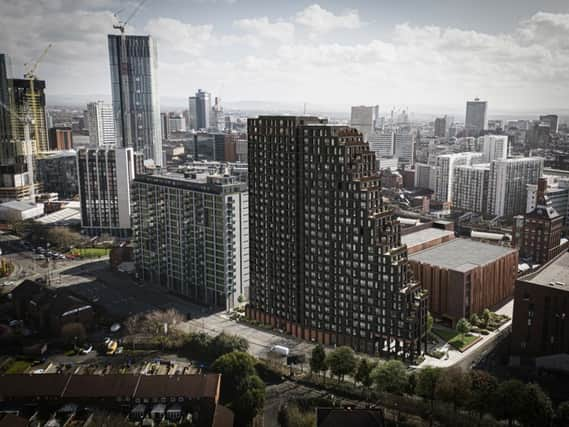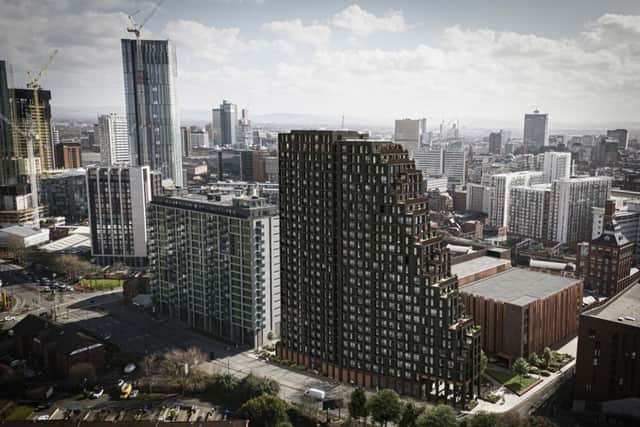Plans for a towering 26-storey apartment block costing £53m submitted in Salford


Plans for a £53million apartment block towering 26 storeys have been submitted to Salford planners.
The application is for 250 flats and 1,000 sq ft of commercial space at the site on Trinity Way and William Street, and will be known as Obsidian when the building is complete in about two-and-a-half years.
Advertisement
Hide AdAdvertisement
Hide AdThe building will comprise 31 studios, 93 one-bed flats, 111 two-bedroom apartments and 15 three bed homes. However, there are no plans for affordable housing in the proposal. Amenities will include a private dining room, gym, cinema room, package store, co-working space and a cafe.
The scheme has been submitted by Euan Kellie Property Solutions on behalf of a joint venture including Salboy and Domis SPV, named Trinity 2.
A viability statement from Tim Claxton Property estimates the construction cost at £53m and is cited as a reason why the plans do not include affordable housing.


If approved, the building will take shape on the site of a current surface-level car park and its access will be from William Street.
Advertisement
Hide AdAdvertisement
Hide AdIn its design and access statement on the Salford City Council planning portal, architect Studio Power says the site ‘provides great connectivity to Manchester and its surrounding areas’.
It said: “The site is positioned on the edge of the city centre, creating an opportunity to bridge the gap between Salford and Manchester, as well as the opportunity to provide an architectural landmark signalling this gateway.”
Development on the historic site can be traced back to 1791 and the Salford Iron Works. It became one of the largest manufacturers of cast-iron products and stationary steam engines which powered the mills around Manchester.
Following the closure of the ironworks in 1939 and slum clearances in the 1950s, it was replaced by low-rise housing as Manchester and Salford grew in the 1970s and 1980s.
Comment Guidelines
National World encourages reader discussion on our stories. User feedback, insights and back-and-forth exchanges add a rich layer of context to reporting. Please review our Community Guidelines before commenting.